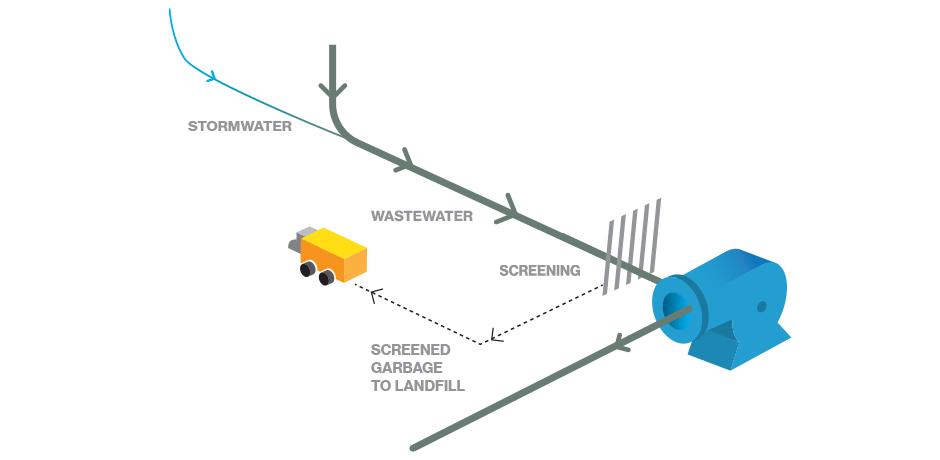Cutting-edge Techniques to Waste Water Treatment Technologies
Cutting-edge Techniques to Waste Water Treatment Technologies
Blog Article
Strategic Approaches to Enhance Drainage Treatment Effectiveness and Lessen Environmental Influence
In the world of waste water therapy, the quest for boosted effectiveness and minimized environmental effect is a continuous obstacle that demands calculated solutions. The assimilation of sophisticated treatment innovations, energy-efficient procedures, resource recovery methods, enhanced nutrient elimination techniques, and wise tracking and control systems represents a diverse structure for resolving these pressing problems.
Advanced Treatment Technologies
Sophisticated membrane purification systems have reinvented sophisticated wastewater therapy procedures, dramatically boosting the elimination of contaminants. This innovation has verified to be very reliable in removing a vast array of impurities, including drugs, hefty steels, and organic substances, which are typically testing to eliminate through conventional therapy techniques.
Furthermore, membrane layer purification systems supply numerous advantages over traditional treatment approaches. In addition, these systems are highly flexible and can be conveniently incorporated into existing treatment plants or utilized as standalone units for decentralized applications.
Energy-Efficient Procedures
The assimilation of energy-efficient processes in wastewater treatment systems is important for enhancing resource application and reducing functional costs. By applying energy-efficient technologies, treatment plants can significantly decrease their carbon impact and general environmental impact. One vital strategy to boosting energy effectiveness in wastewater treatment is the application of advanced aeration systems, such as great bubble diffusers or surface aerators, which can boost oxygen transfer efficiency and lower power intake. Additionally, including power healing systems, like anaerobic food digestion for biogas production or utilizing excess warm for thermal procedures, can assist balance out power demands and promote sustainability.
Additionally, maximizing process control and automation through the usage of sophisticated sensing units and checking systems can boost total energy performance by changing procedures in real-time based upon actual need and conditions. Executing energy audits and on a regular basis checking energy efficiency indications are essential methods to determine locations for improvement and track energy-saving campaigns efficiently. On the whole, the adoption of energy-efficient processes in wastewater therapy not only benefits the atmosphere yet also adds to lasting expense savings and functional sustainability.
Resource Recuperation Approaches
With an emphasis on enhancing resource usage and sustainability in wastewater therapy systems, the execution of resource recovery strategies arises as a critical element in improving operational performance. Resource recuperation strategies in wastewater treatment include the identification and removal of valuable sources from the waste stream, consequently turning what was when thought about waste right into a beneficial asset. By executing source healing methods such as nutrient removal and healing, energy generation from natural matter, and the production of reusable water, wastewater treatment plants can minimize ecological influence while making the most of effectiveness.

Enhanced Nutrient Removal Strategies
Carrying out advanced nutrient removal techniques is crucial for maximizing the effectiveness of wastewater treatment systems. One of the key strategies utilized for enhanced nutrient elimination is the process of organic nutrient elimination (BNR), which includes the removal of nitrogen and phosphorus via biological procedures.

In addition to BNR, advanced therapy approaches such as membrane layer bioreactors (MBRs) and built wetlands can likewise be employed to enhance nutrient removal effectiveness. MBRs make use of membranes to accomplish top quality effluent criteria by effectively eliminating nutrients and put on hold solids. Constructed wetlands resemble all-natural marsh procedures to eliminate nutrients with plant uptake, microbial activity, and sedimentation. By integrating these sophisticated nutrient removal strategies into wastewater treatment industries, municipalities and systems can successfully reduce nutrient pollution and secure the atmosphere.
Smart Surveillance and Control Systems
Using advanced modern technology, the integration of wise tracking and control systems revolutionizes the functional performance of wastewater therapy facilities. These systems include innovative sensing units and data analytics to continually keep track of crucial criteria such as pH levels, turbidity, liquified oxygen, and circulation rates in real-time. By accumulating and assessing this information, drivers can acquire beneficial insights into the performance of the treatment processes, making it possible for proactive changes to optimize treatment performance.
Smart monitoring and control systems additionally sustain remote monitoring abilities, allowing drivers to access real-time data and control helpful resources functions from off-site places. This remote access enhances functional adaptability and responsiveness, allowing quick treatments in instance of system malfunctions article or fluctuations in influent top quality. Furthermore, the anticipating upkeep capabilities of these systems help avoid tools failings and decrease downtime, eventually enhancing the overall integrity of wastewater therapy operations (Waste Water Treatment).
Final Thought
To conclude, tactical strategies such as sophisticated treatment modern technologies, energy-efficient processes, resource healing techniques, improved nutrient elimination strategies, and smart surveillance and control systems play an important duty in improving wastewater treatment efficiency and decreasing environmental influence. By executing these methods, wastewater therapy plants can improve their total efficiency, minimize energy consumption, recoup useful resources, and ensure compliance with ecological policies. These methods are vital for reliable and sustainable wastewater administration practices.

In verdict, tactical approaches such as innovative treatment modern technologies, energy-efficient processes, source recuperation approaches, improved nutrient elimination methods, and clever monitoring and control systems play an important duty in improving wastewater treatment efficiency and reducing environmental influence.
Report this page